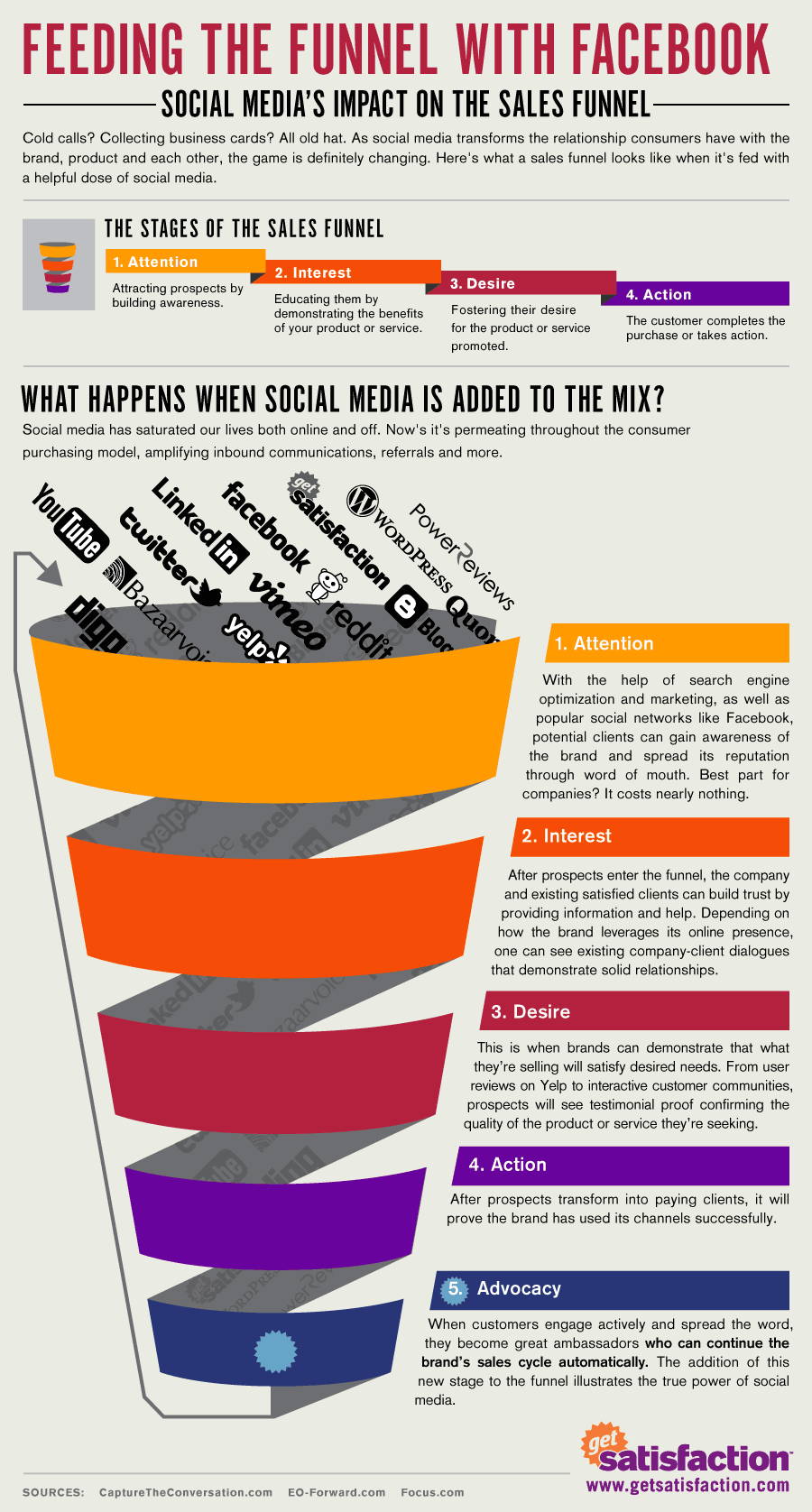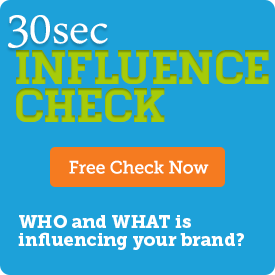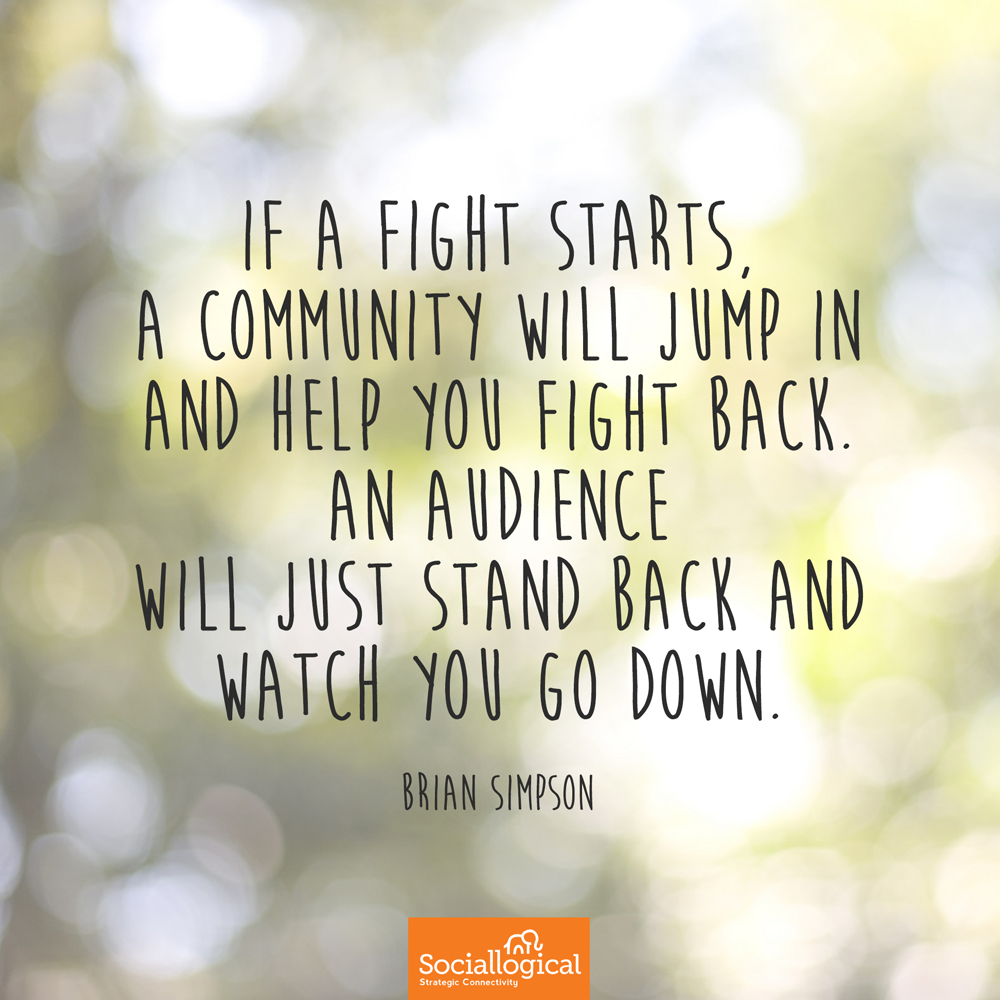What makes social media an essential tool for social enterprise is
Advice, resources, and insight on how to make social engagement work to grow your business and career.
Viewing entries in
Content Marketing
What makes social media an essential tool for social enterprise is
So you posted your story to your Twitter, Instagram, Facebook, Linkedin, and maybe even Google+ accounts. But the great social soap box isn't so. For businesses using social media, the most important message is: target, target, target.
“all social media is fundamentally about relationships and people connecting to people — not companies or brands”
If social media monitoring is about communications, measurement is about business strategy.
I don’t expect everyone to jump on this but for those who already know the superior value of Google+, this simple little service makes it easy to make Plus the centre of your sharing activity without causing you to lose the social networks you’ve built elsewhere.
Influencers get the word out with the same reach and authority that TV, radio, newspapers, and flyers did in the former media era. It is through people sharing that things spread now.
Facebook is now the great social forum where businesses can get to know their communities and build a social reputation. Budgets and expectations should be built around this understanding.
Sharability is the ingredient that must exist in every piece of content you share or you are wasting your time/investment.
We feel a brand when we encounter a "thing" - an organization or grouping of people. We have opinion and emotion that we attach to every brand we encounter, the same way we do with every person we encounter, like it or not.
It turns out that storytelling, especially through a visual, "moving picture" medium like video, TV, or film is how we see things in our minds so they speak to us in our most natural language
How content is shared determines the ROI of the content more than the content itself and should be considered before the content is even created.
The best content a business can share is their own stories. If a client cares about what you sell, they will care about the stories you have to tell. But how the story is told and shared matters a great deal and there are a variety of ways that can be done with both large budgets and no budgets.
Once you Find out who is influencing your company’s brand you can build relationships with them. If the leaders of your company are not among them, they need to be and here are a few steps you can take to figure out who they should be and how you can increase their influence.
 Richard, Vincent, Katherine, Margaret, Lawrence, and Elizabeth have all been lost to me online because I have been looking to connect with Dick, Vinny, Kate, Peggy, Larry, and Beth - the names I know them as.
Richard, Vincent, Katherine, Margaret, Lawrence, and Elizabeth have all been lost to me online because I have been looking to connect with Dick, Vinny, Kate, Peggy, Larry, and Beth - the names I know them as.
Just because your parents named you Stephen doesn't mean you are disrespecting them by being Steve online. And if everyone knows you as Steve, when they go looking for you online they're not likely to find you if you're listed as Stephen.
The whole purpose of creating an online profile, on any social media channel, is to connect with people and to give them an authentic picture of who you are.
So the best approach is to think like a search engine. What will people search for when they look for you? Make that the name that you use on your social profiles. And while you're at it, make sure that the keywords that people are likely to think of when they think of you are also included in your profiles so they get picked up by search.
My real name is Jeffrey. It's the name my parents gave me and it is the name on my Passport and other formal/official documents. But everyone in my life knows me as Jeff. Fortunately for me, Jeffrey is likely to get picked up by most search engines when searching for "Jeff" but a scan of search results by any friend who is looking for me is likely going to miss my 7 letter full name if their brain is scanning for 4 letter names starting with J. So I use Jeff always.
Now imagine if your name is Margaret but you are known as Peggy! Who in the world is ever going to know to search for Margaret?
People aren't going to visit your profile repeatedly after they've connected with you. When they are looking for you you don't need them to find the formal you, just the you they are familiar with for one simple reason: so they can connect with you.
Include your more sophisticated name elsewhere in your profile if you can. In your Linkedin summary, maybe mention your full name somewhere or even tell the story of how you came to shorten your name if it's a good one.
You don't need to let go of your proper name. But if you don't use it regularly, put it in the same place you have it in your everyday life: in the background as a passing reference.
Photo ref: That's me and my friend Manami Fukuda being very sophisticated while modelling for a very fun and memorable event a few years ago.
 Likes, follows, or being added to circles are passive expressions of a low-level of interest that businesses pursue simply because they are numbers that can be measured, pure and simple. "How many" do we have this month compared to last month? It's a natural instinct to count numbers to measure perceived growth in a space that is always misunderstood by pretty much everyone in the beginning.
Likes, follows, or being added to circles are passive expressions of a low-level of interest that businesses pursue simply because they are numbers that can be measured, pure and simple. "How many" do we have this month compared to last month? It's a natural instinct to count numbers to measure perceived growth in a space that is always misunderstood by pretty much everyone in the beginning.
But when we play with social media for a little while we eventually come back to remembering that we are in business to sell something to people who need it. And as we know from politics, just because someone says they like you doesn't mean you'll get their vote when it counts.
One of the greatest and most necessary features of social media is the ability to filter out noise. When we can listen to such a massive number of people and businesses in this wide open online world we run into limits almost immediately as humans. We need to filter to get any value out of these channels.

On Facebook, as quickly as you can call someone your friend or Like a business' page you can "Hide" them from your feed and never hear from them again. This should stop any business in their tracks who believes these superficial numbers count for anything close to long term value for their business. They don't.
On Twitter, the only thing gained by someone following you is that you can then send them a private direct message, which is basically an email. And we have a well-known word for a business who would abuse this channel: spam. Twitter is the truly wide open channel in which using a filtering tool so you can
pay attention to hashtags or lists of people with special interests is necessary to get any value. So if you have 1000 followers on Twitter you can't have confidence that any percent of those followers are paying attention to anything you post. What's even worse is that 85% of all tweets are never seen by anyone, ever.
LinkedIn may be the only social channel where the number of connections matters because there is little social activity. It is powerful and personal but brands struggle to get their numbers up for their Company pages on this professional, etiquette-driven channel.Google+ is the most recent major social platform to emerge and is actually built for when things get noisy. By allowing users to curate circles of their own design, it is an essential feature of this channel to choose who you want to listen to every time you visit.

Social media presents your business with the opportunity to connect with customers in a two-way relationship. It is not a new broadcast channel and those who treat it as such are severely punished with isolation and a damaged brand. It's why so many businesses have "tried social media" and let their efforts die in frustration.
What you can do is measure activity on your channels and find out who is influencing your brand. Who is talking about you and with you and getting your content to new people who might be interested in it? Your influencers are having an impact on your brand in a way that growing follower numbers just is not. Social is about people, not audiences. [tweet this]
When you know who your influencers are you can get to know those people better. Smart businesses will look for ways to reward influencers for their interest in an effort to convert them to advocates that love what your company does and talk positively about your brand to others.
Advocates generate leads. Leads can be converted to sales. And sales are what grow businesses. Measuring this progression of the online relationship is how you measure the ROI of social.
Is your business counting followers or are you earning the deeper interest of your brand influencers? Please tell me what you've learned in the comments.
 We forget sometimes that ads are content, blogs are content, and social sharing is content. Your competitors have content and it is all public and discoverable.
We forget sometimes that ads are content, blogs are content, and social sharing is content. Your competitors have content and it is all public and discoverable.
What makes it even more interesting is that your competitor’s influencers share content too and you can watch for that as well. You can see who is spreading the word for your competitors and helping THEM grow! That is gold, is it not?
It’s not what you can discover that’s so special (although it really is), it’s what you do with the data that counts. So here are 3 things you can do when you know what your competitor is up to:
1. Watch for your competitor’s top content and dissect what makes it work and what doesn’t. When you’re confident that you have nailed what makes one of their blogs work better than another one you can incorporate the winning approach in your own content (your marketing team should have a ball with this).
2. Pay attention to who your competitor’s influencers are; the people who share your competitor’s content so they can reach their target audience. You can add them to a watch list of potential influencers of your own brand and regularly look for non-poachy ways to start and grow relationships with them. If you learn that one of their influencers is the CEO’s husband, well, you know.
3. Learn what hashtags and communities your competitor’s influencers use to get the word out and spend some time in those online neighbourhoods yourself. Use their tags occasionally and visit the blogs they visit. It’s a great way to get to know what interests your community.
Added bonus: if you know the sentiment (positive, negative) that people feel towards your competitor’s content you can think of ways to get more positive content into the same online communities. Sleeze alert: there is a huge risk of coming across as tacky if you don’t think this through with some respect for your competitor and their fans.

You can do it simply by paying attention and creating a scheduled time to regularly look at your competitor’s content. We actually use a tool called Measurely to run discovery campaigns that give us this and a bunch of other super valuable data for our clients. But if your brand community is still small you should be able to handle this with some regularly scheduled snooping and gathering of info into a spreadsheet.
It’s worth it. Your competitors are sharing content that they hope will interest the same people you are. Why limit the data you gather and learn from to just your own when you can learn from theirs too?
 Advertising has always been a bit of a game of roulette. The famous quote that captures the angst of the business owner was portrayed by John Wanamaker nearly 100 hundred years ago when he said, “half the money I spend on advertising is wasted. The trouble is I don’t know which half.”
Advertising has always been a bit of a game of roulette. The famous quote that captures the angst of the business owner was portrayed by John Wanamaker nearly 100 hundred years ago when he said, “half the money I spend on advertising is wasted. The trouble is I don’t know which half.”
I promised I would not name names.
But in the past two years I have had several clients who cut over $1000 per month or more from their advertising budgets - and saw no drop or difference in their business.
What? In one case nearly $3000 per month with no discernible difference in the bottom line? What is going on here?
If you had a big budget twenty years ago, advertising was also a bit of a math formula - or at least so I was told by my business owning friends who fighting the good fight at that time. They tell me that once you had the right channel (TV, radio, or print) you could roughly figure that if you spend X% of your gross revenue, you would see a Y% bump in the bottom line.
I am not sure the good old days were really better.
Today there are more options and more voices clamoring for your advertising and marketing budget than ever before. Do you keep you space in the Yellow Pages? Is it worth paying for exposure in the business directories? How about search engine marketing? Or social media? Everyone seems to be on Facebook these days...
Making sense of the shift to digital and social business is one of the biggest challenges for small business owners and managers these days. The shift seems to elicit one of two reactions: “Oh yeah!” or “Oh no!”
Here are a couple of quick ideas to consider if you’ve “discovered” an extra $30,000 in your advertising budget this year. Yes, I know you deserve that long postponed vacation, but this is about low-hanging fruit that will make the best ROI of what you are already doing:
If you haven’t found excess money in your advertising budget, or are struggling to figure out what might be the best use of your hard earned dollars - you can make sense of this new chaos. The businesses who do, are going to own their competition in the near future. The ones who don’t can stick their head in the sand, because even in the slowest of markets - social business is becoming the new phone, and your customers are expecting you to answer.
If you want to make sense of your advertising budget, and get a better ROI on the dollars you are already spending, join us for this focused workshop and save thousands over the course of the year...
 Bringing one group of friends into a conversation that's happening in a different place on the social web isn't always easy. Sometimes it's awkward and sometimes it's unwanted. But you never can tell where the conversation will strike up and sometimes it makes sense to bring those conversations together. And it always makes sense to bring the best content you have curated into your media hub: your blog.
Bringing one group of friends into a conversation that's happening in a different place on the social web isn't always easy. Sometimes it's awkward and sometimes it's unwanted. But you never can tell where the conversation will strike up and sometimes it makes sense to bring those conversations together. And it always makes sense to bring the best content you have curated into your media hub: your blog.
For a while now Twitter has been allowing tweets to be embedded into web pages with a little bit of code they provide with each tweet. Just look under any post on Twitter.com and you'll see a "more..." link that drops down to expose an "Embed" link. Grabbing the code provided will allow you to embed something like this:
"Either write something worth reading about or do something worth writing about." - Ben Franklin #quote
— Sociallogical™ (@soclogical) November 21, 2011
I could just paste a quote into my post so you can see it and read it, but because I embedded it as a tweet, you can now retweet it, favorite it or do whatever you like to interact with that content on Twitter.
Now Google+ has entered this game, allowing posts on the fastest growing social channel in the world to be embedded into blogs and webpages everywhere, pulling new people into conversations that are already in full swing.
There are a few things that make this even more interesting than Twitter's offer:
Give it a try. In the drop down menu in the top right of your public Google+ posts you'll see the link to "Embed this post". Grab the code and use it the same way as the Twitter embed code.
Embedded Twitter and Google+ posts provide interesting ways to repurpose your social content into your owned media and introduce one segment of your community to another to extend the conversation and bring your brand community more closely together.
What could you embed in your blog that pulls your social media islands closer together?
An African proverb says that it takes a village to raise a child. I believe this is true. I can't imagine where in this world my baby boy would be without the love, support and nurturing of those in our community.
I am also lucky enough to be a member of a more specific community of new moms. That’s us up there in the photo. Bi-weekly we meet in each other’s living rooms, put on a pot of coffee and ventilate our baby woes, share stories and experiences, learn from one another, laugh together, reassure each other that we are doing just fine and, most importantly, we remind each other that we are not going this motherhood thing alone.
Much like it takes a village to raise a child, it takes a community to raise a brand.
This is the next lesson in a series of posts about what my infant son has taught me about life and content marketing (here's lesson 1).
I will never forget the music to my ears that was a fellow expectant mom exclaiming, “we should get together for regular coffee and Bailey’s gatherings after our babies are born.” I'm not sure if I was more excited to fathom a social life after baby, or the ability to finally enjoy an alcoholic beverage again. In any case, she was the leader our mommy community needed.
You see, it takes a leader to get a community going, and then it takes keen individual interest to keep it going. We mommies are fortunate to have all the right ingredients for a healthy community.
Sure, we get together and talk about the best baby rearing practices, articles we've read, developmental milestones and statistical norms, but these discussions alone are not what gel our community together.
This stuff we can get from the googles.
The cohesion of community goes beyond information sharing. A community is formed around a common goal, an emotional connection, a shared opinion, a sense of security, belonging and ownership, safety, non-judgement, protection and understanding. We have expressed on many occasions that we love and care for each other’s babies as if they were our own.
When you’re creating a community around your brand, your members need something to CARE about.

Actually, mean people can galvanize a community, pulling people together to care more deeply for what brought them together in the first place.
Motivated by who-knows-what, some people are just innately mean-spirited. It is no secret that social media is a breeding ground for meanies to unleash their inner bullies. They can attack the community, sometimes in very stealthy ways, by framing their communication in an accepted manner and style. Eventually their contributions will undermine what people in a community care about and raise the ire of some members to defend what is important to them, and in doing so they will freshly define the essence of the community for others to rally behind.
The critical mass is the tipping point, the point at which the community becomes self-sustaining.
Finding this threshold is not cut and dry. Apple Computer's current community mass is over 200 million. Our mommy group: 11 pairs of moms and babes. There is no magic formula to determine the critical mass of your community, however you will know it has begun when your community starts to initiate activity independent of your leadership. For example, a retailer might plan events that bring customers to their store but critical mass is achieved when the community begins to plan their own events around the brand. Recently I was invited by a friend to attend a party at a local shoe store. The staff were every bit a part of the party and little to do with the planning.
Sadly, our mommy leader needed to ‘bow out’ as she put it, to return to full time work. She is still very much a member of our group, but our mommy community lives on in her absence.
If you spoon feed the right ingredients that support what your community cares about most, there will come a point when you can sit back, and enjoy. Like an infant, your community has learned to feed itself.
No one is a member of just one community. We overlap and cross-reference and bring great things from one into another. But what binds a community is the one or two things its members care about the most and the characteristics of how the caring is expressed. Our mommy community cares primarily about our babies. But the characteristics of our community are based on openness, non-judgement, and love of a good time in a real sense, not just a motherly one.
What does your brand community care about the most and what are the ways in which you express that caring? If you find 5 minutes today, list these things for yourself. If you can identify what really matters to your community it might change how you share with them.
Next lesson: Trust with a capital T
The quote above from Brian Simpson actually came to us from a great ebook by our friends at Measurely.
 Two years ago I signed my team up to participate in a course to teach us how to build a social business. It lit a flame that has been burning ever since. Telling our company’s story using social channels has helped us build community around the world. The course was Sociallogical’s Understanding Social Business and, after completing the course, Sociallogical’s Jeff Roach and I discussed the possibilities of putting together a course about the power and brand empowerment of video storytelling in the new digital landscape.
Two years ago I signed my team up to participate in a course to teach us how to build a social business. It lit a flame that has been burning ever since. Telling our company’s story using social channels has helped us build community around the world. The course was Sociallogical’s Understanding Social Business and, after completing the course, Sociallogical’s Jeff Roach and I discussed the possibilities of putting together a course about the power and brand empowerment of video storytelling in the new digital landscape.
It took a year and a half to accomplish, but here we are! Hemmings House and Sociallogical are very excited to roll out our latest course, “Moving Pictures: Making and Sharing Social Videos”. This is an introductory course that will motivate you to pick up your own camera and begin producing content for your business immediately.
Video is considered one of the most effective communication tools in the social space. Businesses are now building their own production companies within their own walls to keep up with the demand for original and relevant content that supports the brand and the tribe.
My hope is that this course will ignite the same fire in you that the Understanding Social Business course did for my team and I. Once you realize that you have the power and the creative assets to tell your own story (and that your own story is truly epic), then this course will encourage you to get out there and shoot!